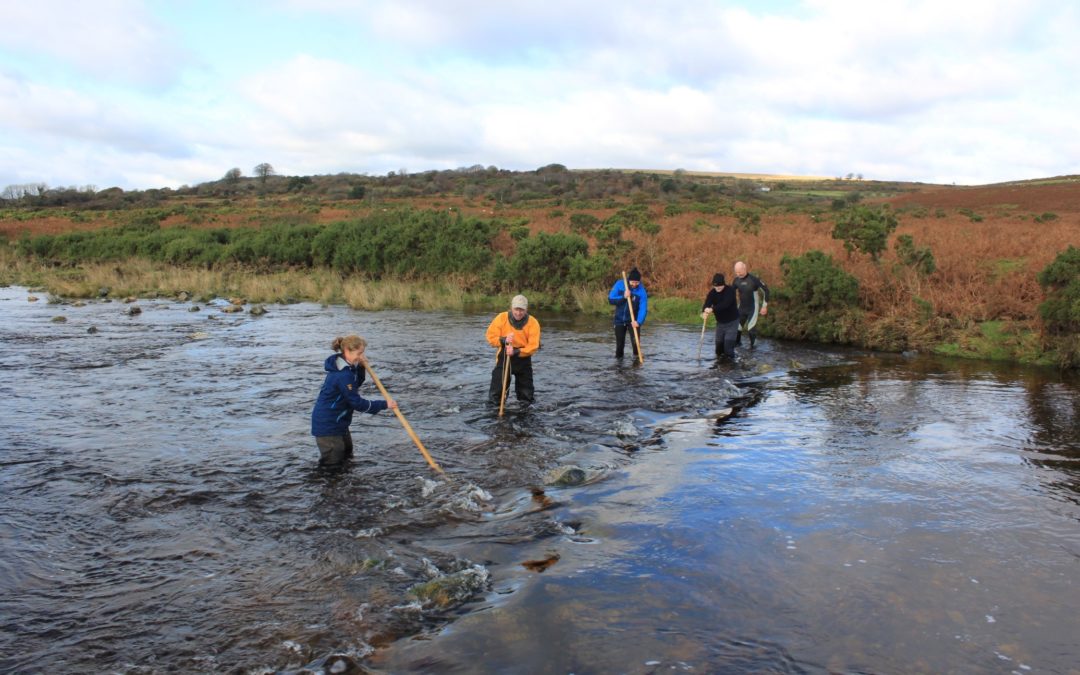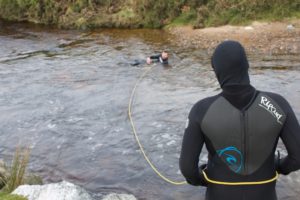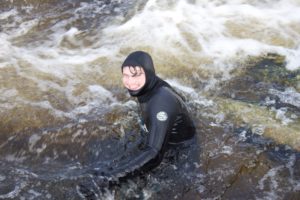As we expand our team of people working directly with watercourses, we continually need to ensure they have appropriate Health and Safety training. For others who have been at the Trust for several years, this is a good opportunity to get up to speed with the latest information and guidance and brush up on old skills which may not have been applied for a while.
Several staff took part in the third course the trust has undertaken with training consultant. Pat Dollard.
Giles Rickard, our Cornwall Fisheries Team Leader and Senior Land Officer said: “Pat never fails to make it an enjoyable and engaging experience.
“There is a skill in conveying something that is serious and potentially lifesaving but in a format that is rememberable and accessible.”
Participants spent the first day in the classroom learning first aid basics such as assessment of victim, communication and putting someone in the recovery position. This also included assessing someone prior to providing CPR along with how to spot and deal with people with shock, and improvise treatments for injuries like arm breaks or cuts using jackets and belts as surrogates for bandages.
The second day focused on dealing with moving water. This took place on Dartmoor on the river Plym and included how to deal with incidents and the appropriate Health and Safety equipment. Topics covered included when it is suitable to wear a life jacket and the differences between a buoyancy aid and life jacket and practising throwing a throw line and how to regather the rope quickly so that it could be re-deployed if missed the first time.
Giles added: “It was then time to jump in the cool clear waters of Dartmoor for training.
“Fortunately most of us had either wetsuits or dry suits, although one hardy sole tackled the water in trousers and jumper only.”
Some of the skills tried included wading a river using a wading stick to assess the footing before walking and how to cross a river using a circle of three people to improve stability. The team also practised the various ways to float down river; headfirst, feet first face down, with feet first and on your back being the safest way, and throwing lines as part of paired rescue in the water to pull people to safety across the flow.
The course provided a practical way to deal with situations our teams could face out in the field (on the river may be a better description). It gives those who have been trained the skills to act quickly and confidently should an incident arise but also look at ways to avoid incidents happening in the first place.
“Patrick’s enthusiasm, engaging manor and teaching technique is a key part of getting the message across in a memorable and enjoyable way and I would, without hesitation, recommend any Rivers Trust with active field staff to get them trained or refreshed in these potentially lifesaving skills,” Giles concluded.
If you would like to discuss training for your trust, please contact Pat Dollard at [email protected] or call 07905 457028.



